 Crime
Crime  Crime
Crime  Technology
Technology 10 Hilariously Over-Engineered Solutions to Simple Problems
 Miscellaneous
Miscellaneous 10 Ironic News Stories Straight out of an Alanis Morissette Song
 Politics
Politics 10 Lesser-Known Far-Right Groups of the 21st Century
 History
History Ten Revealing Facts about Daily Domestic Life in the Old West
 Weird Stuff
Weird Stuff 10 Everyday Products Surprisingly Made by Inmates
 Movies and TV
Movies and TV 10 Actors Dragged out of Retirement for One Key Role
 Creepy
Creepy 10 Lesser-Known Shapeshifter Legends from Around the World
 Animals
Animals 10 Amazing Animal Tales from the Ancient World
 Gaming
Gaming 10 Game Characters Everyone Hated Playing
 Crime
Crime 10 Terrifying Serial Killers from Centuries Ago
 Technology
Technology 10 Hilariously Over-Engineered Solutions to Simple Problems
 Miscellaneous
Miscellaneous 10 Ironic News Stories Straight out of an Alanis Morissette Song
Who's Behind Listverse?

Jamie Frater
Head Editor
Jamie founded Listverse due to an insatiable desire to share fascinating, obscure, and bizarre facts. He has been a guest speaker on numerous national radio and television stations and is a five time published author.
More About Us Politics
Politics 10 Lesser-Known Far-Right Groups of the 21st Century
 History
History Ten Revealing Facts about Daily Domestic Life in the Old West
 Weird Stuff
Weird Stuff 10 Everyday Products Surprisingly Made by Inmates
 Movies and TV
Movies and TV 10 Actors Dragged out of Retirement for One Key Role
 Creepy
Creepy 10 Lesser-Known Shapeshifter Legends from Around the World
 Animals
Animals 10 Amazing Animal Tales from the Ancient World
 Gaming
Gaming 10 Game Characters Everyone Hated Playing
10 Reasons The Coronavirus Should Terrify You
In the past 200 years or so, we’ve all worked together and managed to come up with even more innovative ways to end life on Earth as we know it. The invention of gunpowder itself was an unprecedented innovation in mass slaughter – the death counts of some wars took away entire chunks of our population—though the inventions of the coming centuries would make that look tame in comparison.
See Also: 10 Good Things We Owe To The Black Death
One threat, though, has remained unchanged for as long as we can remember, and we still don’t take it too seriously. The coronavirus story is breaking as we write this, with cases reported in countries around the world. It has completely broken-down services in China and nearby countries, catching one of the most technologically developed countries – and the rest of the world – by surprise.
The reason this recent breakout has shocked everyone is that we’ve forgotten that the biggest threat to human life isn’t nukes or anything else, but pandemics. Even with all our advanced technology – some of which may even work against us during outbreaks – the threat of a virus coming from nowhere and ending human civilization as we know it is still as real as it always was.
10 Globalization Is Making Things Worse, Not Better

One would think that because of the world being as connected as it is today, infectious diseases stand much less of a chance than any other time in history. It’s true to an extent, too, as our connectedness advances our collective knowledge in various fields, especially medicine. If you can get information on a disease in an isolated part of the world, biologists from around the world can study it and build up defenses against it.
The problem is, though, that when a truly serious outbreak – like 2019-nCoV – occurs, all of those benefits of global networks work against us. Most of the times, we simply don’t have any way to detect the viruses, as they’re almost always unknown strains no one has seen before (more on that in a bit). So now, with vast, interconnected networks to transport people around the world but no way to tell if they’re infected, outbreaks can reach much further and develop defenses before we can even detect them. The Avian flu outbreak, as an example, was a stronger, previously unknown strain of a virus found only in birds, and is likely an ancient disease that wasn’t a threat until it was.[1]
9 Pandemics Have Killed Far More People Than Anything Else
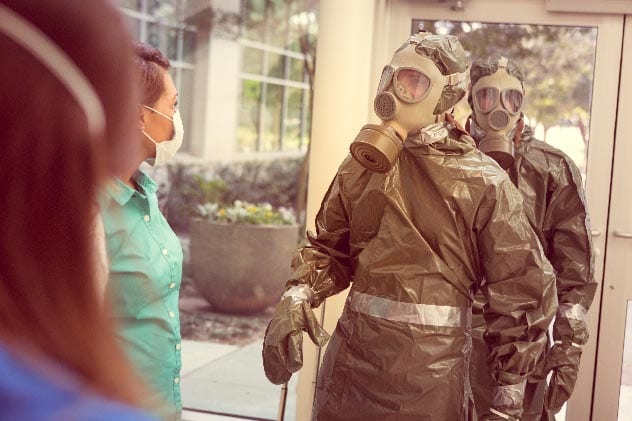
The reason we don’t consider pandemics a serious enough threat is due to our belief that we’re now more immune to them, or that they don’t kill as many people as other things, like nukes. While it’s true that recent advancements in detection and treatment of pathogens has made us better at fighting them, there are also many more of them now, including strains that have never infected humans before. For the death count, deaths from pandemics outnumber any other disaster event in history by a long shot.
You don’t even need to go into the past; we’re currently in the middle of quite a few serious pandemics. The AIDS virus has killed around 40 million people by now. The influenza flu causes around 80,000 – 100,000 annual deaths in the U.S. alone, which is only a fraction of its global death count of 650,000.
Even in history, global pandemics are by far the biggest agents of mass destruction we have ever seen. Just take the Justinian Plague, which killed around a hundred million people over a span of many centuries. At its peak when it first broke out, it’s said that around 10,000 people were dying to it every day just in Constantinople. The Spanish Flu killed over a 100 million in a matter of months, which started during the four-year long WW1 – the war with the second highest death count ever of 40 million.
The reasons these viruses failed to kill everyone are many. The Spanish Flu, for example, just decided to get milder as time went by, looking us in the eye and saying that it chooses to spare us. The world wasn’t as interconnected as today during these plagues, either. If a strengthened strain of any of those plagues returns, you can be sure that it would have a much bigger impact today.[2]
8 Every New Outbreak Requires Working From Scratch

At the time of writing this, multiple countries – including the U.S. – have imposed mandatory quarantine procedures at their major airports. Countries around the world have also imposed emergency health alerts to keep 2019-nCoV out, though cases are springing up by the day. China, seems to be in lockdown mode, as over 200 people have died and 10,000 infected by the coronavirus. It begs the question; why do we find ourselves so unprepared for disease outbreaks every few years?
It’s simple, our medical technology is still not advanced enough to detect and find cures for new outbreaks. Previous medical knowledge doesn’t apply to new strains, which require new assessment and diagnosis. That wastes precious time, too. In most of the worst pandemics in history, most of the deaths occurred in the initial days, before people could find ways to contain it. Sure, that was as simple as maybe not sleeping near where you poop in the middle ages, but even modern plagues – like the Spanish Flu – were the deadliest in their initial days. Every new outbreak still requires understanding the pathogen from scratch, which in turn affects our ability to effectively respond to the crisis.[3]
7 They Are Getting More Powerful (And At A Scary Rate)
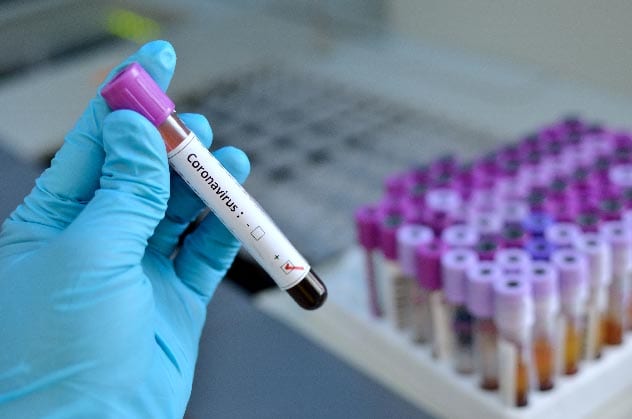
If you read about some of the more serious outbreaks in recent times – including coronavirus – the more concerning details seem to be the gory ones. Take Ebola. Most people were horrified by the hazmat suits and stories of medical professionals horribly dying due to infection while treating the locals. It’s a heartbreaking image, though hardly the scary part. Outside the purview of prime-time news cameras, many other diseases kill in much more horrifying ways.
The worst part, though, isn’t that it’s a strain we had no defenses against. It’s that every time we study a new outbreak of Ebola – as it’s still ongoing – it turns out to be a stronger version of a previously found strain. That means that the viruses are rapidly getting better at not dying, as well as evolving faster than anyone expected (or even knew of). Even the current outbreak of coronavirus is due to a strain that can’t inherently affect humans, but has mutated to be able to do so. It’s also stronger and more virulent than any strain found before, which is why it’s such a big crisis in China.
These outbreaks prove what biologists have been saying for years. Newer and more powerful strains of viruses evolving against our medicines is one of the biggest threats to human life.[4]
6 Vaccines Cause Some Viruses To Become Even Deadlier
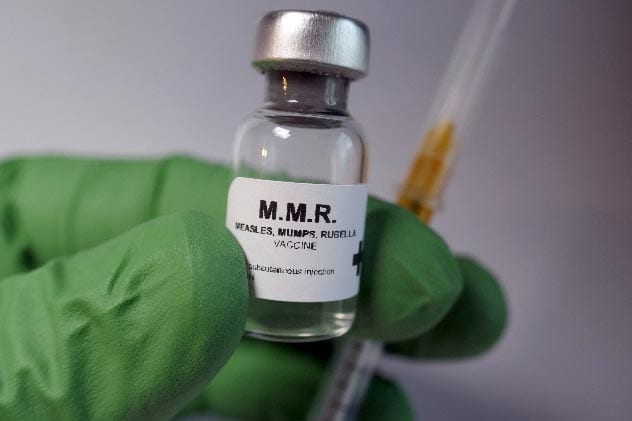 Vaccines have their fair share of critics, but we can all agree that they’ve managed to eradicate some of the worst diseases humanity has been plagued with for thousands of years. Because of vaccines, people aren’t dying on the streets because they accidentally had a bad apple some two centuries ago.
Vaccines have their fair share of critics, but we can all agree that they’ve managed to eradicate some of the worst diseases humanity has been plagued with for thousands of years. Because of vaccines, people aren’t dying on the streets because they accidentally had a bad apple some two centuries ago.
Scientifically speaking, though, vaccines come with a side effect. According to a study, vaccines are making viruses – especially the deadly ones – even deadlier. It makes sense biologically, as vaccines used on poultry animals and other pets may make some diseases stronger, which could then learn to affect humans and wreak havoc.
Many scientists have criticized the study on the grounds that it only affects chickens, as it lends credence to the anti-vaccine movement. Regardless of who it affects and how people feel about vaccines, unless we come up with an alternative way to build vaccines, a possible out-of-control pandemic that kills us all may just be one of its side effects we’d have to deal with.[5]
5 Many New, Previously Unknown Viruses Are Showing Up
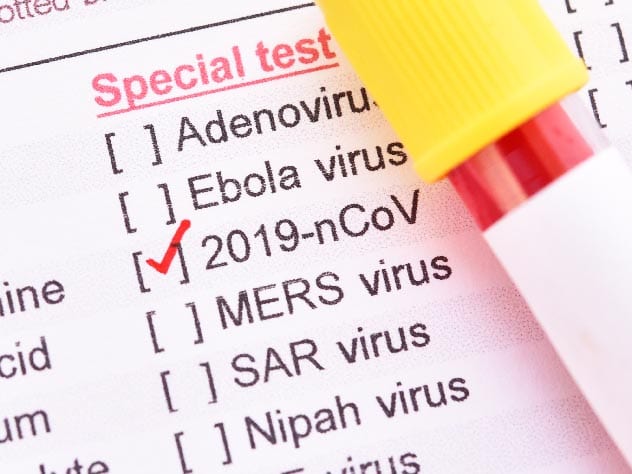
As far as climate change affecting pathogens is concerned, the relationship is debatable. Of course, there’s no doubt that warmer temperatures would make them spread to many more countries than before, though that could be fixed easily if the governments work together.
A more pressing relationship between climate change and a virus-related extinction event lies somewhere on the top of the world map. The permafrost set all over the Arctic – particularly in Siberia – is believed to house a number of dormant and dangerous diseases. Many scientists are of the opinion that quite a few of our recent strains of viruses – like the Ebola – came from the permafrost that has already melted, and it doesn’t sound too far-fetched to us.
Regardless, many new strains of viruses, including the coronavirus, have been discovered in recent years, a phenomenon not many have been able to properly explain. If experts are to be believed, the melting permafrost would also give way to diseases that we may have never even seen, let alone dealt with.[6]
4 Microbes Are Mysterious And Impossible To Study
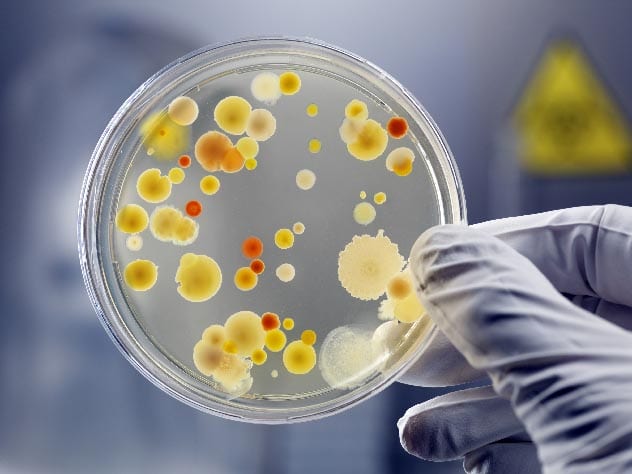
If we asked you about the most dominant type of life on Earth after humans, you’d probably say mammals or something. If you look at the numbers or ask a biologist, though, you’d realize that no other creature compares to microbes in numbers, diversity, types of habitat they live in etc. You’d find microbes living everywhere you can imagine; from the most inhospitable depths of the ocean to outer space. While there’s no doubt that they’ve done for themselves, their diversity makes them difficult to study and counter for us.
We simply have no idea how many types of microbes exist on Earth. Forget Earth, they recently found a type of bacteria in the human gut that the scientists had never seen before. It was so alien that they had to make a whole separate branch of life for it, which must have separated from ours in the early years of evolution. It’s only one of the examples of many ways we don’t – and never will – fully understand the almost-alien world of microbes, which is crucial to fighting serious, civilization-threatening pandemics.[7]
3 The Next Pandemic Is Around The Corner, And We’re Not Ready

If there’s one thing that the coronavirus outbreak proves, it’s that we’re still highly dependent on nature’s mercy to keep us alive. Our systems are still unequipped to deal with a virus outbreak, even if science maintains that we’re at an acute and urgent risk of a global pandemic.
One study found that if a global outbreak happens right now, it would kill more than 80 million people due to heightened health crisis situations in many countries around the world. Biologists are also finding many new strains of viruses – strains they’ve never seen before—in animals at an alarmingly-higher rate than before, particularly among livestock. Other studies have stated that the next virus is about to come soon—if it’s not here already with 2019-nCoV—and we’re ridiculously underprepared for it.[8]
2 We’re Responsible For Making Them Stronger, Too

In all the devastating pandemics in history, there wasn’t much we could do. Even today, the viruses are getting stronger as a side effect of antibiotics and other measures that are required to live a comfortable life on Earth. There’s nothing much we can do about it except strengthen our medical infrastructure and hope for the best, as it doesn’t seem to be our fault.
If we look at some historical decisions by major governments and scientific institutions, though, at least some of it is definitely our fault. There are quite a few conspiracy theories around some recent outbreaks originally coming from military labs, and we’re seeing no reason why some of them can’t be true. Biological and chemical research has always been a huge part of military budgets, and looking at the possibility of them causing pandemics in the civilian world, it may not be the best idea.
Worryingly enough, the U.S. government recently removed checks from the kind of pathogens they can make in the lab, effectively giving private and government labs across the country a license to make newer, deadlier strains of viruses. Of course, the research is also aimed at helping combat these diseases, though the possibility of them being misused for monetary or other reasons is too glaring to ignore.
There have been rare cases of genuine human errors leading to leaked viruses, too, like the last outbreak of the H1N1 virus. When the scientists discovered that it was a strain that hadn’t been seen since the 1950s and decided to look into the matter, they found that it was because of a lab worker’s poor handling of the sample.[9]
1 Some Viruses Out There Are Much Worse Than 2019-nCoV

The Spanish Flu and Black Death are remembered due to their death count and effects on the world. That’s why they sound so scary, as they killed millions of people and brought about profound changes in society.
If we compare their effects to some of the other scarier instances of outbreaks but with a lower count, though, they don’t stand a chance. There have been many outbreaks in history far worse than anything seen during the Spanish flu – like the 15th century spell of the English Sweating Sickness – which killed their victims much more horrifically. The only reason we don’t hear about them is that they subsided on their own and kept their kill count low. If they were to return to stay, we’d have an even harder time dealing with them than even the worst outbreaks in our history.
More importantly, some of these diseases belong to mysterious families of viruses we don’t know how to deal with. Even the Spanish Flu was a mutated form of influenza previously known to us. According to many biologists, the real threat to human life is from pathogens that may be completely different from anything we’ve seen before.[10]
For more lists like this, check out 10 Of Human History’s Most Atrocious Plagues, and Top 10 Mysterious Viruses








